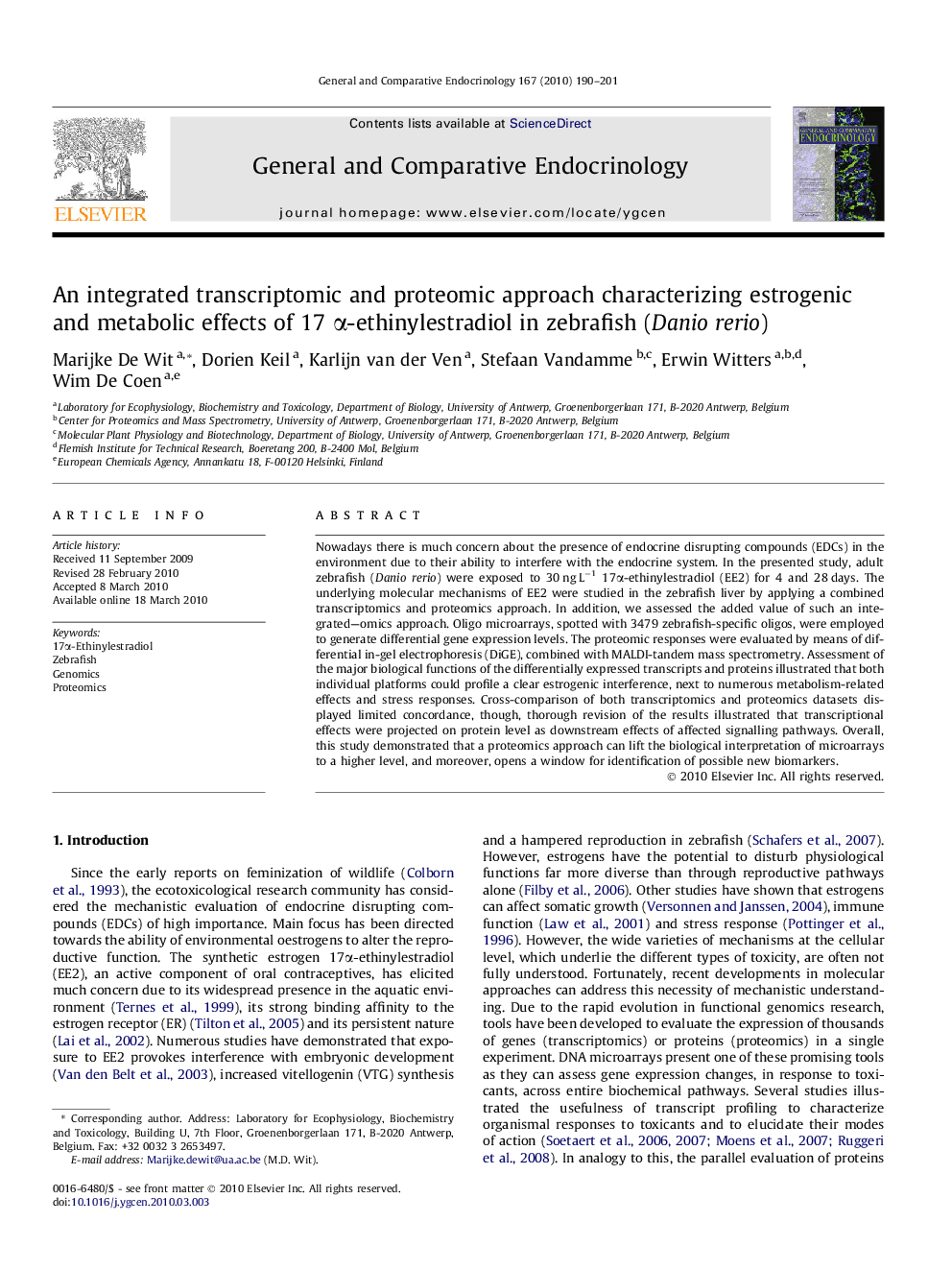| Article ID | Journal | Published Year | Pages | File Type |
|---|---|---|---|---|
| 2800990 | General and Comparative Endocrinology | 2010 | 12 Pages |
Nowadays there is much concern about the presence of endocrine disrupting compounds (EDCs) in the environment due to their ability to interfere with the endocrine system. In the presented study, adult zebrafish (Danio rerio) were exposed to 30 ng L−1 17α-ethinylestradiol (EE2) for 4 and 28 days. The underlying molecular mechanisms of EE2 were studied in the zebrafish liver by applying a combined transcriptomics and proteomics approach. In addition, we assessed the added value of such an integrated—omics approach. Oligo microarrays, spotted with 3479 zebrafish-specific oligos, were employed to generate differential gene expression levels. The proteomic responses were evaluated by means of differential in-gel electrophoresis (DiGE), combined with MALDI-tandem mass spectrometry. Assessment of the major biological functions of the differentially expressed transcripts and proteins illustrated that both individual platforms could profile a clear estrogenic interference, next to numerous metabolism-related effects and stress responses. Cross-comparison of both transcriptomics and proteomics datasets displayed limited concordance, though, thorough revision of the results illustrated that transcriptional effects were projected on protein level as downstream effects of affected signalling pathways. Overall, this study demonstrated that a proteomics approach can lift the biological interpretation of microarrays to a higher level, and moreover, opens a window for identification of possible new biomarkers.
